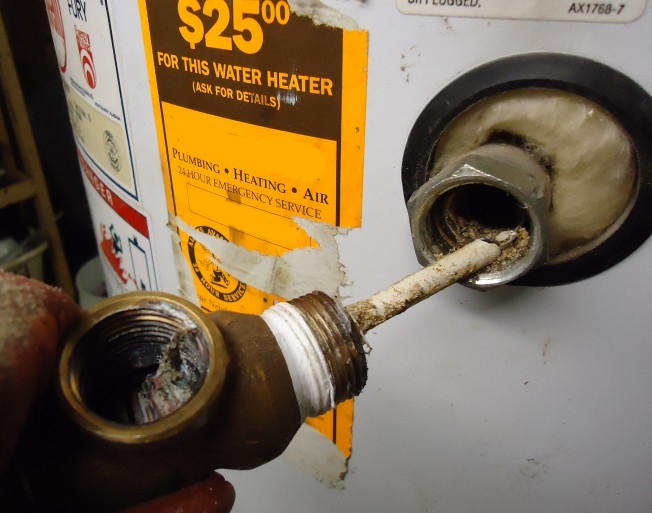Expert Guidance on Caring for Your Home's Hot Water SystemEfficient Strategies for Maintaining Your Home's Hot Water System
Expert Guidance on Caring for Your Home's Hot Water SystemEfficient Strategies for Maintaining Your Home's Hot Water System
Blog Article
The content down the page pertaining to Tips on Maintaining a Water Heater is exceedingly enlightening. Read on and make your own results.

Hot water is necessary for everyday comfort, whether it's for a rejuvenating shower or washing dishes. To guarantee your hot water system runs efficiently and lasts much longer, normal upkeep is key. This post offers practical suggestions and insights on exactly how to maintain your home's hot water system to stay clear of interruptions and expensive fixings.
Introduction
Keeping your home's warm water system might appear daunting, yet with a few straightforward steps, you can ensure it runs efficiently for years to find. This overview covers every little thing from understanding your warm water system to DIY maintenance tips and understanding when to call in professional assistance.
Value of Keeping Your Hot Water System
Routine upkeep not only prolongs the life-span of your hot water system however likewise guarantees it runs successfully. Overlooking upkeep can bring about lowered efficiency, greater power expenses, and also premature failing of the system.
Indicators Your Hot Water System Requirements Maintenance
Knowing when your warm water system requires focus can prevent major issues. Watch out for indicators such as irregular water temperature level, strange sounds from the heating system, or corroded water.
Understanding Your Hot Water System
Before diving right into upkeep jobs, it's handy to recognize the fundamental elements of your warm water system. Usually, this consists of the hot water heater itself, pipes, anode rods, and temperature controls.
Monthly Upkeep Tasks
Normal month-to-month checks can aid catch small problems before they escalate.
Flushing the Water Heater
Flushing your hot water heater removes sediment buildup, improving effectiveness and extending its life.
Monitoring and Changing Anode Rods
Anode poles avoid rust inside the storage tank. Inspecting and replacing them when worn is essential.
Examining and Changing Temperature Level Settings
Changing the temperature settings ensures optimal efficiency and security.
Do It Yourself Tips for Upkeep
You can do numerous maintenance tasks on your own to keep your hot water system in leading problem.
Checking for Leaks
Routinely examine pipelines and connections for leakages, as these can cause water damage and greater expenses.
Evaluating Stress Alleviation Valves
Checking the stress safety valve ensures it functions appropriately and avoids extreme pressure build-up.
Protecting Pipes
Insulating warm water pipes decreases heat loss and can conserve power.
When to Call an Expert
While do it yourself upkeep is advantageous, some concerns need professional expertise.
Facility Problems Requiring Specialist Help
Instances include major leakages, electrical problems, or if your hot water heater is regularly underperforming.
Routine Specialist Maintenance Advantages
Expert upkeep can consist of complete evaluations, tune-ups, and guaranteeing compliance with safety and security requirements.
Final thought
Regular maintenance of your home's warm water system is important for efficiency, long life, and price savings. By following these tips and recognizing when to look for expert aid, you can make certain a trustworthy supply of warm water without unexpected disruptions.
How to Maintain an Instant Hot Water Heater
Before tinkering with your hot water heater, make sure that it’s not powered on. You also have to turn off the main circuit breaker and shut off the main gas line to prevent accidents. Also turn off the water valves connected to your unit to prevent water from flowing into and out of the appliance. 2. When you’re done, you have to detach the purge valves’ caps. These look like the letter “T” and are situated on either side of the water valves. Doing so will release any pressure that has accumulated inside the valves while at the same time avoid hot water from shooting out and burning your skin. 3. When the purge valves’ caps are removed, you have to connect your hosing lines to the valves. Your unit should have come with three hoses but if it didn’t, you can purchase these things from any hardware or home repair shops. You can also get them from retail stores that sell water heating systems. Read the user’s manual and follow it to complete this task properly. When the hosing lines are connected, open the purge port’s valves. 4. You should never use harsh chemical cleaners or solutions when cleaning your unit. Make use of white vinegar instead. It should be undiluted and you’ll probably use about 2 gallons. 5. Now flush your water heater. This task should probably take about 40 minutes. We can’t give you specific directions for this because the procedure is carried out depending on the type, model and brand of your heater. With that being said, refer to the user’s manual. 6. When you’re done draining the unit, you have to turn off the purge port valves again. Remove the hosing lines that you earlier installed on each of the water valves. Put the valve caps (purge port) back in their respective places and be very careful so as not to damage the rubber discs that are found inside these caps. 7. Now that everything’s back in place, check your user’s manual again to find out how to reactivate your water heating system. 8. Once it is working, turn one of your hot water faucets on just to let air pass through the heater’s water supply pipes. Leave the tap on until water flows smoothly out of it. https://www.orrplumbing.com/blog/2014/september/how-to-maintain-an-instant-hot-water-heater/

We had been made aware of that editorial on Tips on Maintaining a Water Heater from someone on a different blog. Enjoyed our posting? Please share it. Help someone else find it. I praise you for being here. Don't forget to stop by our blog back soon.
Give Me A Quote! Report this page